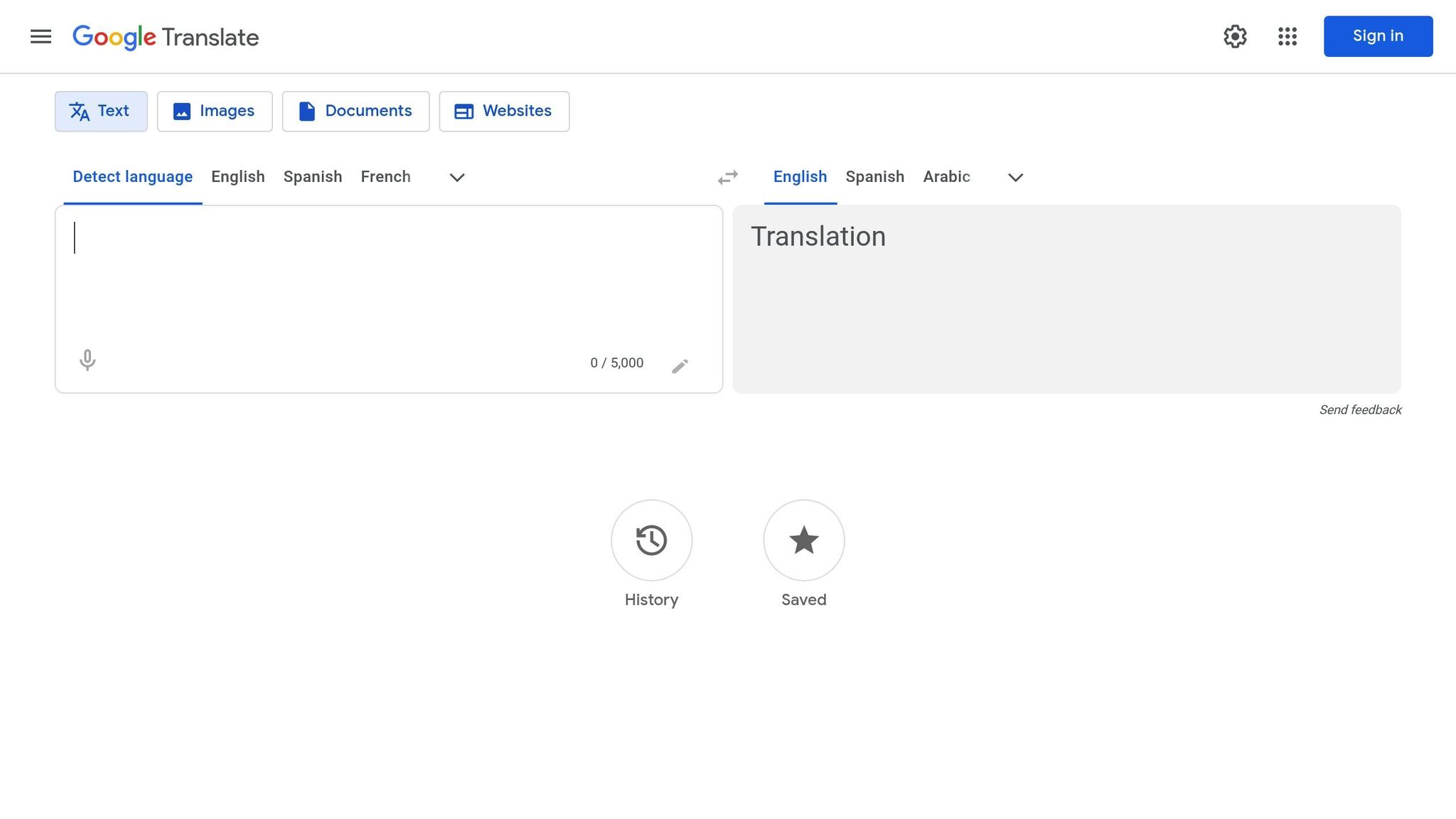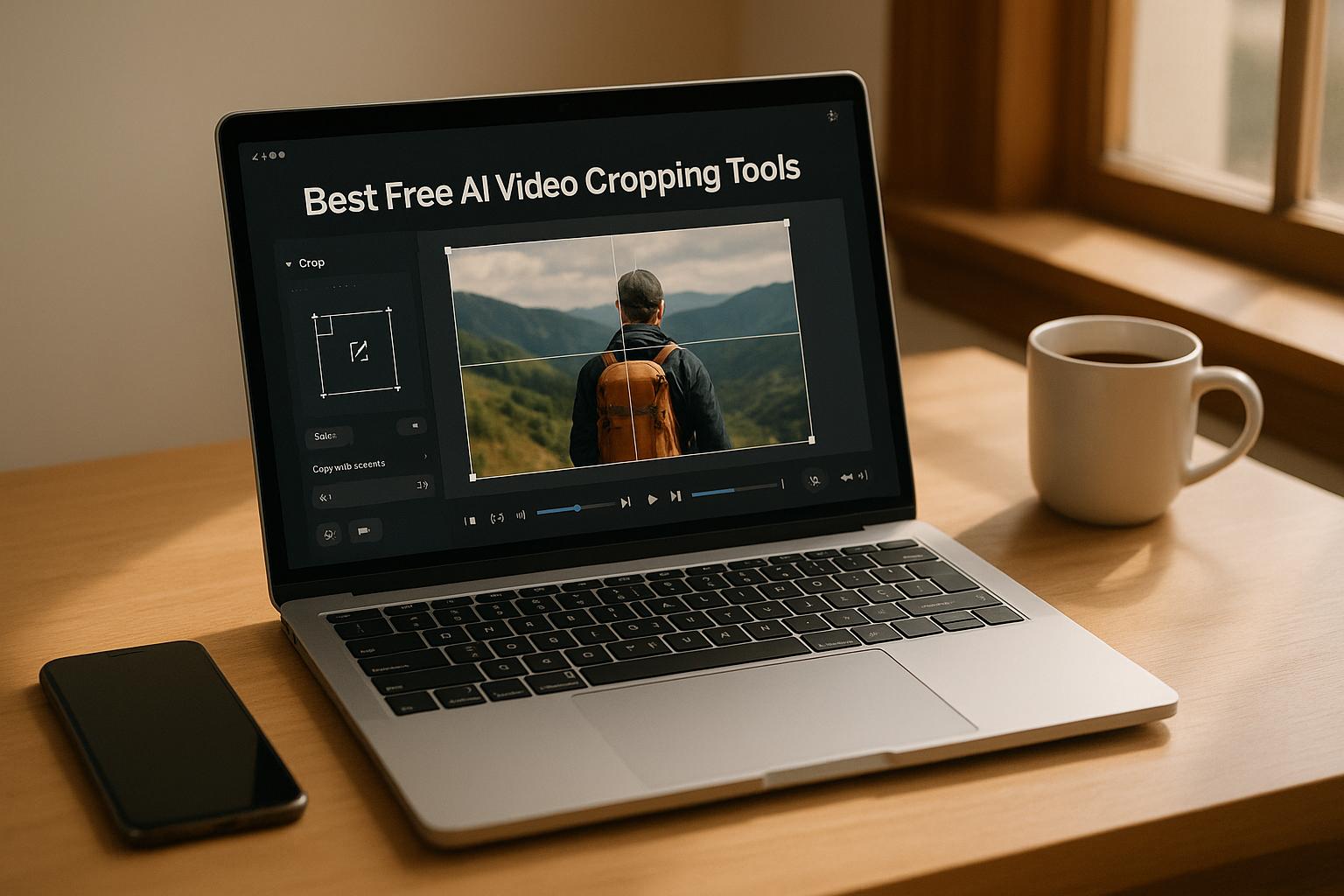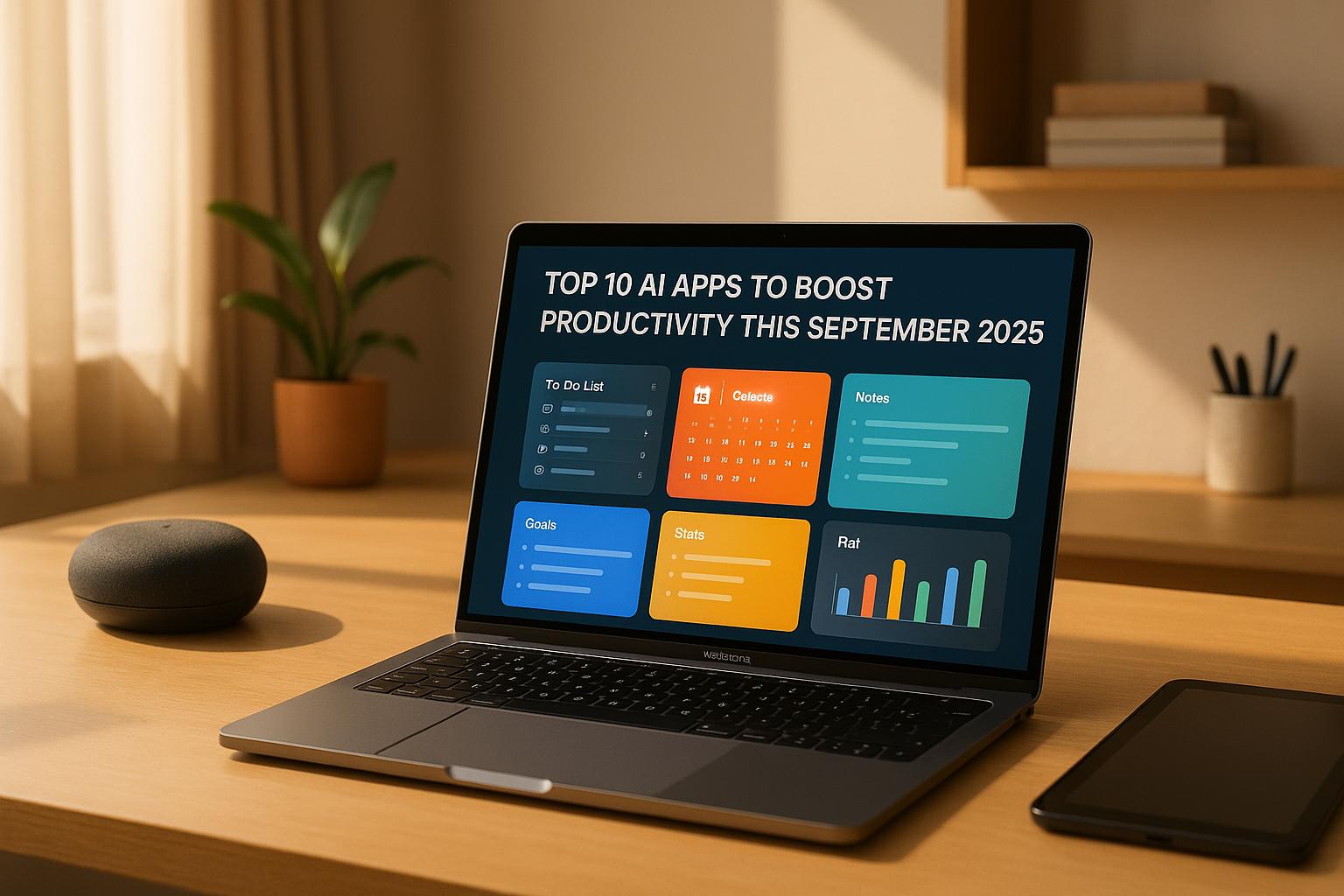DeepL Translator is one of the most accurate AI-powered translation tools available in 2025. It specializes in delivering context-aware translations that preserve tone, style, and intent. Here's a quick overview of its strengths:
- Accuracy: DeepL achieves 89% overall accuracy, outperforming competitors like Google Translate in key areas such as verb valency (91.5% vs. 57.4%).
- Language Support: Focuses on 33 languages, excelling in European language translations.
- Features:
- Unlimited text translation
- Custom glossaries for terminology management
- Advanced neural networks for context preservation
- Integration options (browser extension, API, and workflow tools)
- Limitations:
- Limited language range compared to Google Translate's 130+ languages
- Free version may pose privacy concerns for sensitive data
Quick Comparison:
| Feature | DeepL | Google Translate |
|---|---|---|
| Languages Supported | 33 | 130+ |
| Overall Accuracy | 89% | ~70% |
| Privacy (Free Version) | Texts stored | Texts stored |
| Best Use Cases | Technical, legal, and academic documents | Real-time, broad language needs |
DeepL is ideal for professionals needing precision in technical or specialized content. Google Translate is better for casual use and broader language support.
Google Translate vs DeepL Translate vs ChatGPT (2025 ...

1. DeepL Translator Features
DeepL Translator sets a high bar for AI translation in 2025, offering context-aware translations through a range of standout features.
Unlimited Translation Capacity
DeepL allows users to translate text without any character limits. This is especially helpful for professionals handling lengthy documents or large-scale translation projects.
Advanced Language Processing
The platform's neural networks thoroughly analyze text, focusing on:
- Maintaining voice and tone
- Matching writing styles
- Preserving context-specific meanings
- Ensuring proper grammar and syntax
Customization Options
DeepL offers tools tailored for professional users, such as:
- Customizable glossaries for managing terminology
- Language preference settings
- Options to adjust translation tone
- Preferences for handling proper nouns
These features enhance accuracy, as shown in the table below:
| Translation Element | Accuracy Rate |
|---|---|
| Verb Valency | 91.5% |
| Non-verbal Agreement | 92.7% |
| False Friends Detection | 83.3% |
| Ambiguity Resolution | 74.4% |
Additionally, DeepL is designed to easily integrate into various workflows.
Integration Capabilities
The platform supports integration through:
- A browser extension for quick webpage translations
- A developer API for custom applications
- Compatibility with Bureau Works TMS for efficient workflows
Technical Precision
DeepL excels at translating technical and industry-specific content with high accuracy. Its performance across different translation forms is detailed below:
| Translation Type | Accuracy |
|---|---|
| Continuous Form | 94% |
| Combined Form | 88% |
| Discontinuous Form | 81% |
These features make DeepL a reliable choice for professionals in technical, legal, and other specialized fields, ensuring translations that are both accurate and context-aware.
sbb-itb-212c9ea
2. Google Translate Features
Google Translate stands out for its extensive language coverage and practical usability. The 2025 version showcases advancements in AI translation, leveraging the powerful GNMT system.
-
Extensive Language Coverage
Google Translate now supports over 130 languages, with 110 newly added options. -
Neural Network Processing
The GNMT system processes entire sentences instead of individual words, enhancing translation accuracy. Here's a breakdown of accuracy rates for some common language pairs:
| Language Pair | Accuracy Rate |
|---|---|
| English to Spanish | >90% |
| English to French | 80–90% |
| English to German | 80–90% |
| English to Portuguese | 70–80% |
These figures highlight its ability to handle various language pairs effectively.
-
Context Awareness
Research shows that Google Translate accurately conveys meaning in 82.5% of instructional content. -
Impact on Business
Localizing landing pages and advertisements into target languages can lead to an average 20% increase in conversions. Full localization efforts can push this figure as high as 70%. -
Specialized Content Translation
While Google Translate is effective for straightforward text, it may struggle with complex or nuanced terminology. However, it performs reliably for languages like Arabic, Korean, Brazilian Portuguese, and Mandarin Chinese.
Strengths and Limitations
DeepL, as of its 2025 testing, stands out in specific areas while showing room for improvement in others. It delivers highly accurate translations for European languages and handles complex expressions effectively. Here's a quick breakdown:
| Aspect | DeepL |
|---|---|
| Language Support | 33 languages |
| Translation Accuracy | Excels with European languages |
| Context Handling | Leverages advanced neural networks for natural translations |
| Privacy & Security | Free version stores texts; paid version processes data via secure servers |
| Business Applications | Well-suited for professional content |
| Specialized Content | Handles idioms and conversational tones effectively |
DeepL's advanced neural network ensures it captures context accurately, and its training data from Linguee helps produce nuanced translations. However, it does face some challenges.
Key Limitations
-
Privacy Concerns
The free version's data handling may pose risks for sectors dealing with sensitive information. -
Limited Language Range
With support for only 33 languages, it may not meet the needs of organizations requiring translations for a broader range of global languages. -
Inconsistent Contextual Accuracy
While its translations for European languages are reliable, performance can vary with other languages.
Since its launch in 2017, DeepL has gained over a billion users. This widespread adoption has driven improvements in accuracy and context handling, making it a strong choice for professionals who require precise translations.
For businesses, it's essential to consider factors like content type, language needs, privacy concerns, and usage volume to decide if DeepL aligns with their translation requirements.
Final Assessment
Based on the detailed features discussed earlier, here's how the tools perform across different industries:
| Industry | Best Tool | Key Strengths |
|---|---|---|
| Legal & Medical | DeepL | Excels at managing complex, nuanced language essential for legal and medical documentation |
| Tourism & Hospitality | Google Translate | Offers real-time conversation tools and supports a wide range of languages |
| Academic Research | DeepL | Provides better context understanding and more natural translations |
| E-commerce | Google Translate | Covers more languages and processes translations quickly |
| Technical Documentation | DeepL | Delivers more accurate translations with better context preservation |
Each tool caters to specific professional needs, as highlighted below.
DeepL stands out in professional settings, especially for European languages. It offers high-quality, context-aware translations, making it ideal for industries where precision is critical. Its strong privacy measures and ability to handle complex language add extra value for specialized fields.
When choosing a translation tool, think about what you need most:
-
For technical content, European languages, or precision-focused documents:
- Accurate context handling
- Strong technical translation capabilities
- Robust privacy features
- Effective use of specialized terminology
-
For broader language coverage or real-time applications:
- Support for less common languages
- Real-time conversation tools
- Image translation options
- Fast processing speeds



